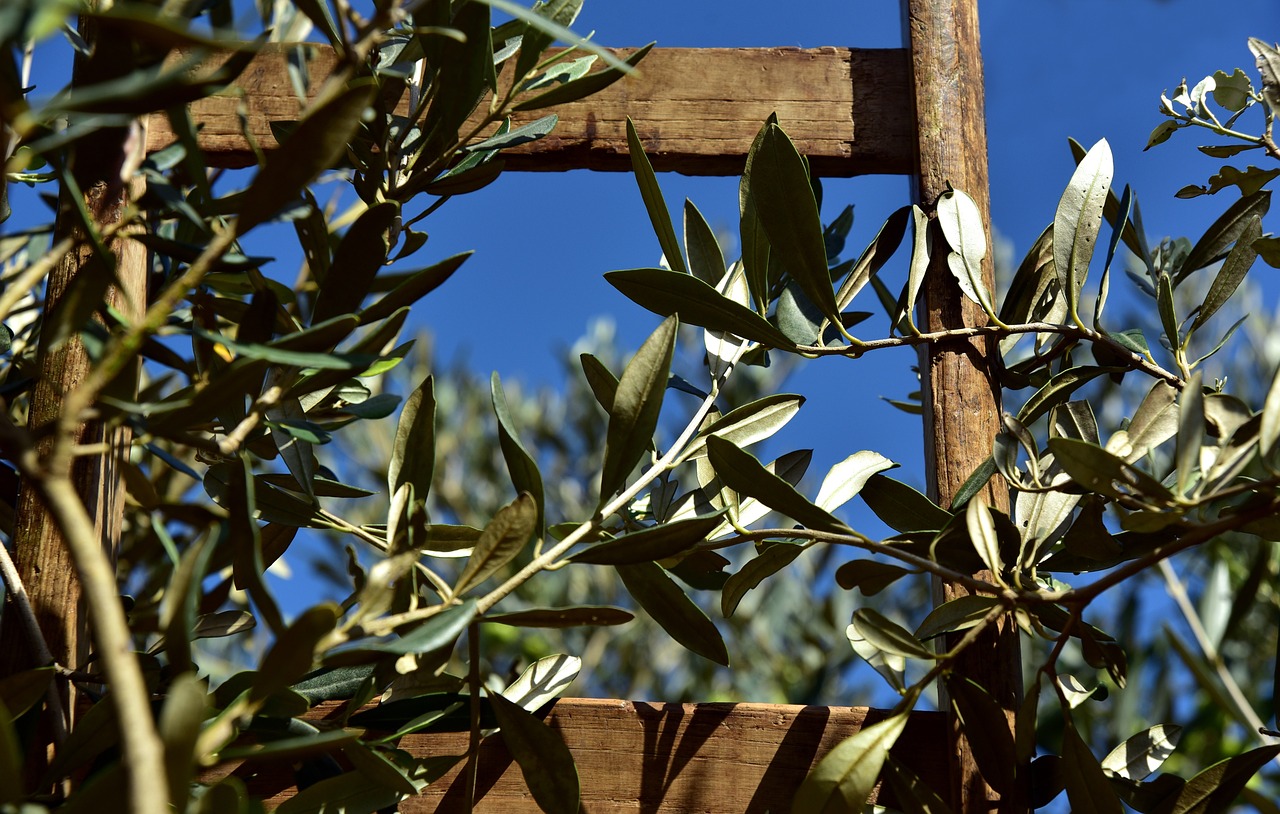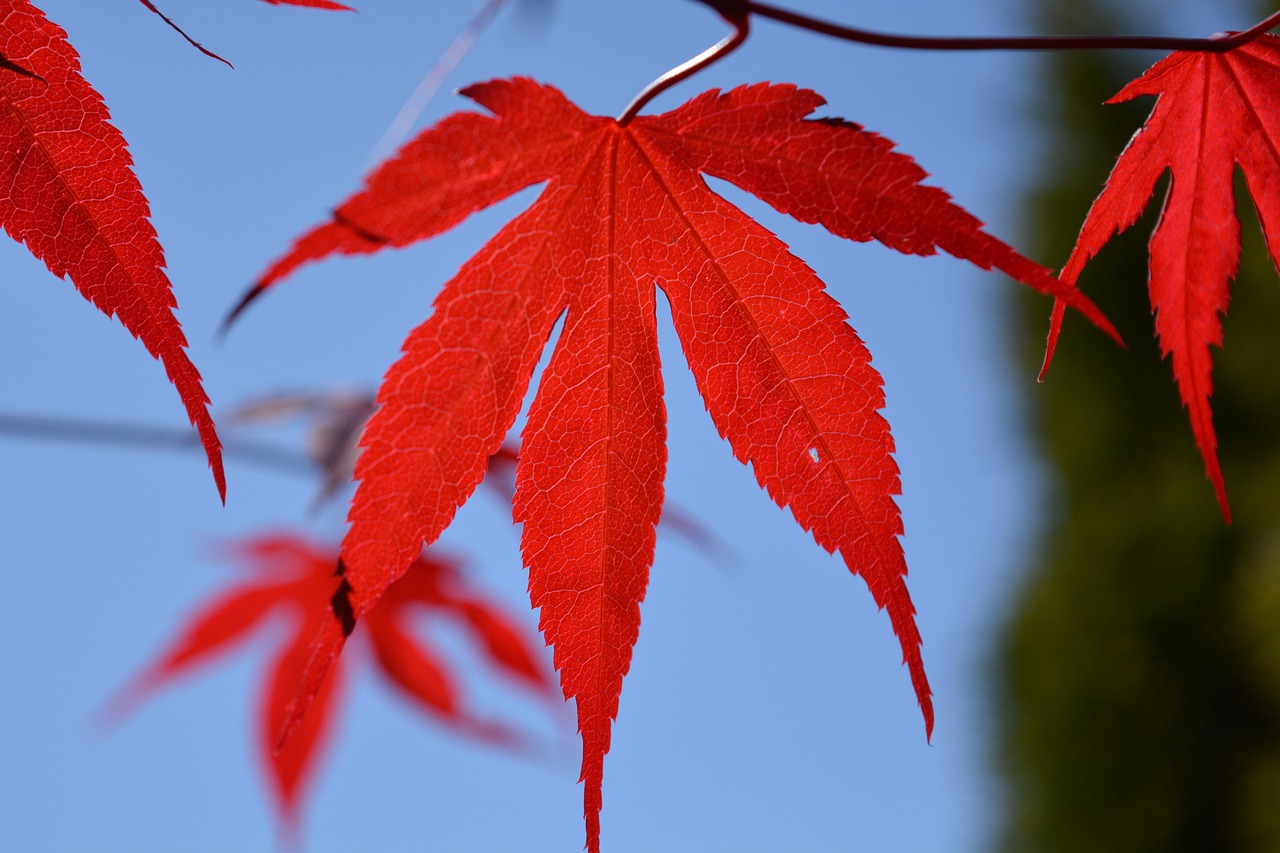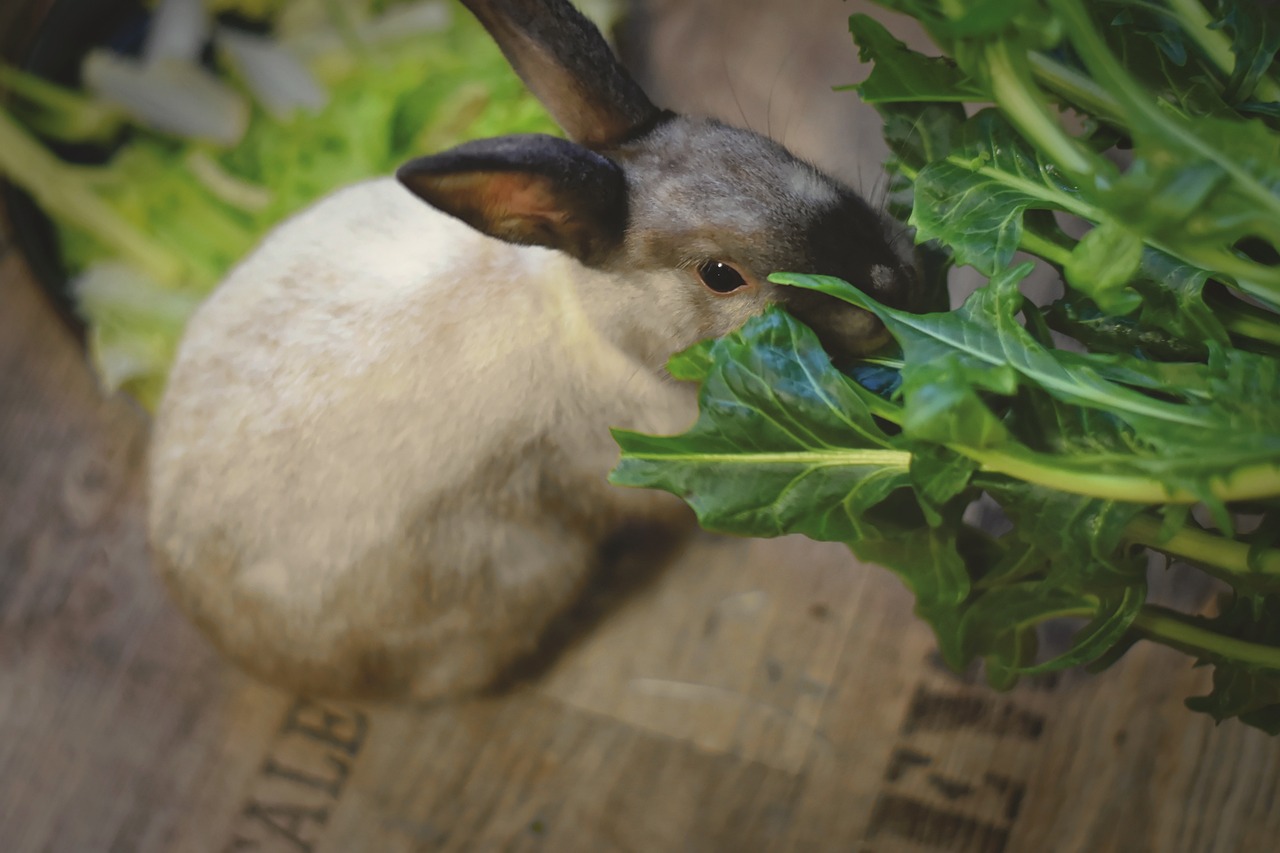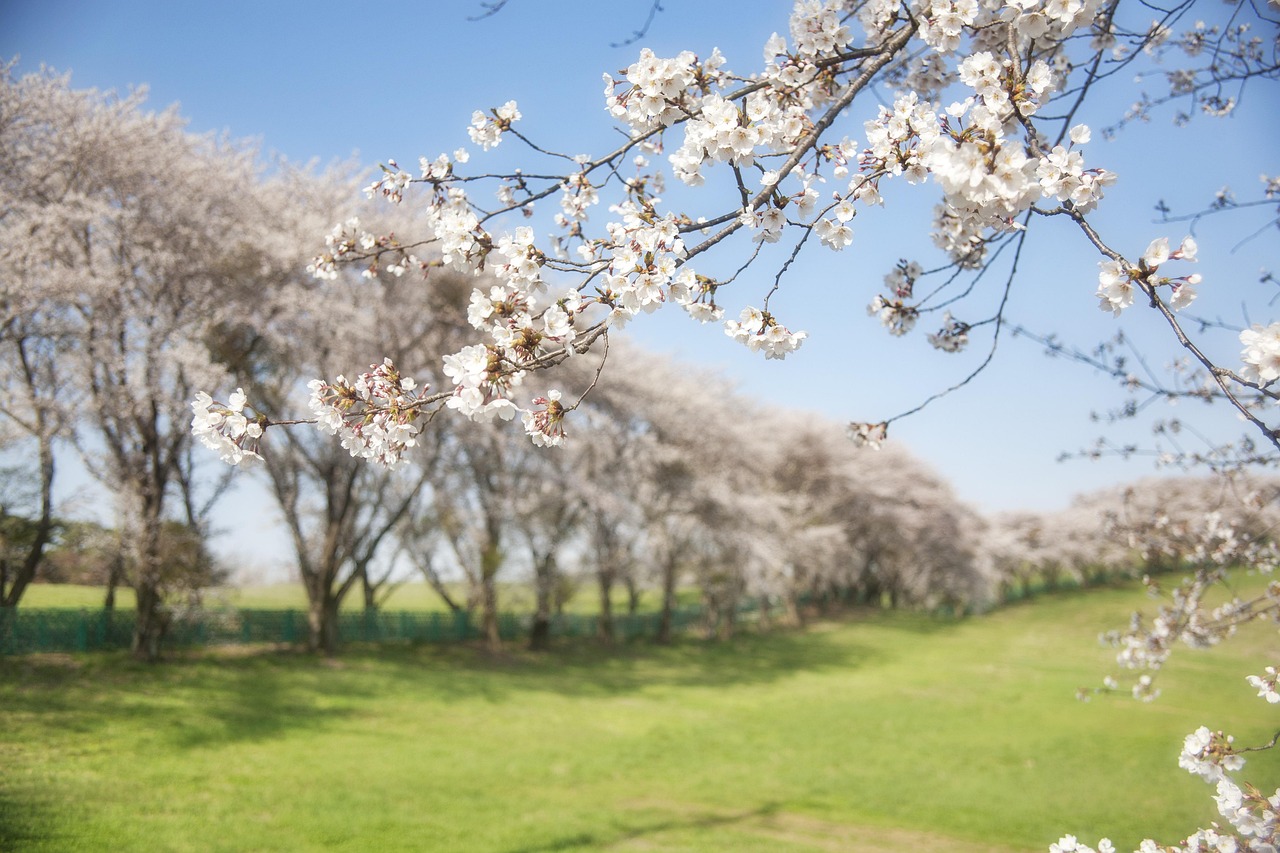Top 10 Trees That Thrive in Containers
Container gardening has become a popular trend for urban dwellers and gardening enthusiasts alike. With limited space in cities and a desire for greenery, many are turning to trees that can flourish in pots and planters. This article explores the best tree species suited for container gardening, highlighting their unique characteristics, care requirements, and benefits for urban settings and small spaces. From vibrant foliage to fragrant blossoms, these trees not only beautify your surroundings but also offer a sense of tranquility and connection to nature. So, whether you have a cozy balcony, a small patio, or just a sunny corner in your yard, there’s a perfect tree waiting for you to adopt!
Ficus trees are a favorite among container gardeners due to their adaptability and attractive foliage. With varieties like the Ficus lyrata (Fiddle Leaf Fig) and Ficus benjamina (Weeping Fig), these trees can thrive both indoors and outdoors. Ficus trees can grow quite tall, but when planted in containers, they remain manageable. Their glossy leaves can add a touch of elegance to any space, making them versatile choices for enhancing your home or garden. They prefer bright, indirect light and require regular watering, allowing the soil to dry slightly between waterings. With the right care, these trees can be a stunning focal point in your container garden.
Imagine bringing a piece of the Mediterranean to your home! Olive trees do just that, adding a unique flair to container gardens. These trees are not only beautiful but also drought-tolerant, requiring minimal maintenance. This makes them ideal for busy gardeners seeking low-care options. Olive trees thrive in well-drained soil and full sunlight, and with their silvery-green leaves, they create a striking contrast against vibrant flowers. Plus, you might even get to enjoy homegrown olives if you're lucky! Just be sure to protect them from extreme cold, as they prefer warmer climates.
For those who appreciate stunning colors and shapes, the Japanese maple is a must-have. These small trees are prized for their delicate leaves that change colors with the seasons—from vibrant reds in autumn to lush greens in summer. When planted in containers, they provide year-round beauty and can be positioned to catch the light beautifully. Japanese maples prefer partial shade and well-drained soil, making them perfect for patios or shaded corners of your garden. Their graceful form and striking colors can transform any space into a serene oasis.
Who wouldn’t want fresh lemons or limes right at their fingertips? Citrus trees, such as lemon and lime, are perfect for container gardening. Not only do they yield delicious fruits, but they also offer fragrant blossoms that can fill your outdoor area with a delightful aroma. These trees thrive in full sunlight and require regular watering, especially during fruiting. With proper care, you can enjoy the satisfaction of harvesting your own citrus, adding a burst of flavor to your dishes and drinks. Plus, they make for an eye-catching addition to any garden!
Dwarf conifers are the unsung heroes of container gardening. Their compact size and year-round greenery make them an attractive choice for small spaces and mixed plantings. Varieties like Juniperus horizontalis and Pinus mugo can thrive in pots and offer structure to your garden. These trees are hardy and can withstand a range of weather conditions, making them low-maintenance. Dwarf conifers can serve as a backdrop for seasonal flowers or stand alone as a statement piece, proving that even small spaces can make a big impact!
Bay trees, with their aromatic leaves, bring both beauty and functionality to container gardens. Often used in culinary dishes, these evergreen trees are perfect for garden enthusiasts who enjoy cooking. Bay trees thrive in full sun and well-drained soil, and they can be pruned to maintain a desired shape. Their lush foliage adds a touch of elegance, while their culinary uses make them a practical choice for any gardener. Just imagine stepping outside to snip fresh bay leaves for your favorite recipes!
Known for their stunning spring blossoms, redbud trees are a delight to behold. With their vibrant pink flowers, they adapt well to containers and provide beautiful color, making them a favorite among gardeners looking for seasonal interest. Redbuds prefer well-drained soil and can thrive in partial shade to full sun. Their heart-shaped leaves and unique branching structure add visual interest throughout the year, ensuring that your container garden remains captivating even when the flowers have faded.
The star magnolia is a small tree that produces stunning star-shaped flowers in early spring. Its compact size and fragrant blooms make it an excellent choice for container gardening. Star magnolias prefer well-drained soil and full sun to partial shade, and they can bring a sense of wonder to your garden as they bloom early in the season. Their unique flowers can be a conversation starter, and the tree itself can fit beautifully on a patio or balcony.
Last but certainly not least, weeping cherry trees are celebrated for their cascading branches and beautiful flowers. These graceful trees thrive in containers, adding elegance and charm to any outdoor setting. Weeping cherries prefer full sun and well-drained soil, and their stunning spring blooms can create a picturesque scene. Imagine hosting a garden party under the soft pink blossoms, creating a magical atmosphere that your guests will remember long after they leave.
Q: Can all trees be grown in containers?
A: Not all trees are suited for container gardening. It’s essential to choose varieties that have a smaller root system and can adapt to limited space.
Q: How often should I water container trees?
A: Container trees typically require more frequent watering than those planted in the ground. Check the soil moisture regularly and water when the top inch feels dry.
Q: Do I need to fertilize container trees?
A: Yes, container trees benefit from regular fertilization, especially during the growing season. Use a balanced fertilizer to promote healthy growth.

1. Ficus Trees
This article explores the best tree species suited for container gardening, highlighting their unique characteristics, care requirements, and benefits for urban settings and small spaces.
Ficus trees are a fantastic choice for those venturing into the world of container gardening. Their adaptability and stunning foliage make them a favorite among both novice and seasoned gardeners. You’ll find them thriving in various environments, from cozy apartments to spacious patios. But what really sets Ficus apart is their versatility; they can be grown indoors or outdoors, adjusting beautifully to their surroundings.
One of the most popular varieties is the Ficus lyrata, commonly known as the fiddle-leaf fig. This tree is adored for its large, glossy leaves that create a dramatic statement in any space. If you’re looking for something a bit more compact, the Ficus benjamina, or weeping fig, is perfect. Its cascading branches and small leaves add a touch of elegance without overwhelming your area.
When it comes to care, Ficus trees are relatively low-maintenance. They prefer bright, indirect sunlight but can adapt to lower light conditions. Just be cautious of overwatering; these trees like their soil to dry out a bit between waterings. A quick tip: if the leaves start dropping, it might be a sign that your Ficus is either thirsty or unhappy with its light situation.
Here’s a quick overview of the care requirements for Ficus trees:
| Care Aspect | Requirements |
|---|---|
| Sunlight | Bright, indirect light |
| Watering | Allow soil to dry out slightly between waterings |
| Soil | Well-draining potting mix |
| Temperature | 65°F to 75°F (18°C to 24°C) |
Additionally, Ficus trees can be pruned to maintain their shape and size, making them perfect for container gardening. You can create a stunning focal point in your garden or balcony by pairing them with colorful flowering plants or other greenery. Imagine the contrast of the rich green leaves against vibrant blooms; it’s a sight that can brighten anyone’s day!
In summary, Ficus trees not only enhance the aesthetic appeal of your space but also purify the air, making them a win-win addition to any container garden. They’re like the reliable friend who always shows up to the party, bringing life and joy wherever they go!
- How often should I water my Ficus tree? Water when the top inch of soil feels dry.
- Can Ficus trees tolerate low light? While they prefer bright light, they can survive in lower light conditions but may not thrive.
- What should I do if my Ficus tree's leaves are dropping? Check the watering schedule and light conditions, as this is often a sign of stress.

2. Olive Trees
When it comes to container gardening, olive trees are nothing short of a superstar! These exquisite trees not only bring a touch of the Mediterranean to your outdoor space but also boast remarkable resilience and low maintenance needs. Imagine stepping outside to a sun-drenched patio adorned with the silvery-green leaves of an olive tree, their beauty instantly transporting you to a quaint Italian villa. Isn't that a delightful thought?
Olive trees are incredibly adaptable and can thrive in various climates, making them a perfect choice for both seasoned gardeners and those just starting out. They are particularly well-suited for container gardening due to their relatively small root systems, allowing them to flourish even in limited spaces. This adaptability means you can enjoy the charm of an olive tree whether you live in a bustling city or a cozy suburban neighborhood.
One of the most enticing aspects of olive trees is their drought tolerance. Once established, these trees require minimal watering, making them ideal for busy gardeners or those residing in regions with limited rainfall. Just think about it: you can have a stunning tree that thrives on neglect! However, it's essential to provide adequate sunlight. Ideally, olive trees need at least six hours of direct sunlight each day to produce their signature fruits.
Speaking of fruits, did you know that olive trees can produce olives in containers? While it may take a few years for your tree to start bearing fruit, the wait is well worth it. Not only will you have fresh olives to enjoy, but you'll also be able to impress your friends and family with your homegrown delicacies. Just picture yourself hosting a summer gathering, serving up a delicious Mediterranean platter featuring olives harvested from your very own tree!
In terms of care, olive trees are relatively straightforward. Here are some essential tips to keep your olive tree thriving:
- Watering: Allow the soil to dry out between waterings. Overwatering can lead to root rot, so it's better to err on the side of caution.
- Fertilizing: Use a balanced fertilizer during the growing season to support healthy growth and fruit production.
- Pruning: Regular pruning helps maintain the shape of the tree and encourages better air circulation, which is crucial for preventing pests.
In conclusion, olive trees are a fantastic addition to any container garden. Their beauty, low maintenance requirements, and the potential for homegrown olives make them a winning choice for anyone looking to enhance their outdoor space. So, why not consider adding an olive tree to your collection? You might just find that it becomes the centerpiece of your garden!
Q: Can olive trees survive winter?
A: Yes, olive trees can survive mild winters. However, if you live in an area with harsh winters, it's best to bring the tree indoors or provide protection.
Q: How often should I water my olive tree?
A: Water your olive tree when the top inch of soil feels dry. Be cautious not to overwater, as olive trees prefer drier conditions.
Q: Do olive trees need a specific type of soil?
A: Olive trees thrive in well-draining soil. A mix designed for Mediterranean plants or a standard potting mix with added perlite works well.

3. Japanese Maple
When it comes to container gardening, few trees can match the beauty and elegance of the Japanese Maple. These stunning trees are not just a feast for the eyes; they also bring a touch of tranquility and sophistication to any outdoor space. With their delicate leaves that change from vibrant greens to fiery reds and oranges in the fall, Japanese Maples are like nature's own fireworks display. They thrive in containers, making them perfect for urban gardeners or those with limited space.
One of the most appealing aspects of the Japanese Maple is its variety. There are numerous cultivars, each with its own unique characteristics. Some have finely dissected leaves, while others boast broad, lobed foliage. This diversity allows you to choose a tree that perfectly fits your aesthetic preferences. For example, the Acer palmatum 'Bloodgood' is known for its deep red leaves that hold their color well into the summer, while the Acer palmatum 'Sango Kaku' showcases beautiful coral bark in winter.
In terms of care, Japanese Maples are relatively low-maintenance, but they do have some specific needs. They prefer a well-draining soil rich in organic matter, and they thrive in partial shade. Too much direct sunlight can scorch their delicate leaves, so finding the right balance is crucial. Regular watering is essential, especially during hot summer months, but be careful not to overwater as this can lead to root rot. A good rule of thumb is to keep the soil consistently moist but not soggy.
Another fantastic benefit of growing Japanese Maples in containers is their mobility. If you find that your tree is not getting enough sunlight or if you want to change up your garden layout, you can easily move your container to a more suitable location. This flexibility is especially valuable for those living in areas with varying light conditions throughout the seasons.
In addition to their aesthetic appeal, Japanese Maples can also serve as focal points in your garden. Their unique shapes and colors can complement a variety of plants, creating a visually stunning landscape. Pairing them with evergreens or perennials can enhance their beauty and provide year-round interest.
Overall, the Japanese Maple is a fantastic choice for container gardening. Its stunning appearance, low-maintenance care, and adaptability make it a beloved option for gardeners of all skill levels. Whether you're looking to create a serene garden retreat or simply want to add a splash of color to your patio, the Japanese Maple is sure to impress.
- How often should I water my Japanese Maple in a container? It’s best to keep the soil consistently moist but not soggy. Water regularly, especially during hot weather, but allow the top inch of soil to dry out between waterings.
- Can I grow a Japanese Maple in full sun? While some varieties can tolerate more sun, most Japanese Maples prefer partial shade to protect their delicate leaves from scorching.
- What size container should I use for my Japanese Maple? A container that is at least 18-24 inches in diameter is recommended to allow for healthy root growth.
- When is the best time to prune my Japanese Maple? The best time to prune is in late winter or early spring before new growth begins.

4. Citrus Trees
Citrus trees are not just any ordinary plants; they are the vibrant life of container gardening! Imagine stepping out onto your patio and being greeted by the fragrant blossoms of lemon or lime trees. These trees bring a splash of color and a delightful aroma that can brighten any outdoor space. Whether you live in a bustling city or a serene suburb, citrus trees are perfect companions for your container garden. They thrive in pots, making them an excellent choice for those with limited space.
One of the most appealing aspects of citrus trees is their dual-purpose nature. Not only do they produce stunning flowers, but they also yield delicious fruits that you can enjoy fresh from your garden. Picture this: a sunny afternoon, and you pluck a ripe lemon from your tree to squeeze into a refreshing drink. How satisfying is that? Plus, the fruits are packed with vitamins, making them a healthy addition to your diet.
When it comes to care, citrus trees are relatively low-maintenance, which is a huge plus for busy gardeners. They thrive in well-draining soil and require full sun for at least 6-8 hours a day. Regular watering is essential, especially during the growing season, but be careful not to overwater, as this can lead to root rot. Fertilizing with a balanced citrus fertilizer every few months will keep your tree healthy and productive.
Here’s a quick overview of some popular citrus trees that do well in containers:
| Tree Type | Fruit | Size | Care Level |
|---|---|---|---|
| Lemon Tree | Yellow Lemons | Up to 3-4 feet | Low |
| Lime Tree | Green Limes | Up to 3-4 feet | Low |
| Orange Tree | Sweet Oranges | Up to 4-5 feet | Moderate |
| Mandarin Tree | Seedless Mandarins | Up to 3-4 feet | Low |
In addition to their beauty and functionality, citrus trees can also enhance your mental well-being. Studies have shown that spending time in green spaces can reduce stress and improve mood. So, why not create your own little citrus oasis? With a little love and care, these trees will reward you with bountiful harvests and a serene environment.
In summary, citrus trees are a fantastic choice for container gardening. They offer a beautiful blend of aesthetic appeal and practical benefits, making them a must-have for any garden enthusiast. So, if you’re looking to add a touch of sunshine to your outdoor space, consider planting a citrus tree today!
- Can citrus trees survive winter in containers? Yes, citrus trees can survive winter in containers, but they may need to be brought indoors or protected from frost in colder climates.
- How often should I water my citrus tree? Water your citrus tree when the top inch of soil feels dry. Be careful not to overwater, as this can lead to root rot.
- What type of fertilizer should I use? Use a balanced fertilizer specifically formulated for citrus trees, applying it every few months during the growing season.

5. Dwarf Conifers
Dwarf conifers are a fantastic choice for container gardening, especially if you're looking to add some structure and year-round greenery to your space. These compact trees are not just visually appealing; they also offer a range of benefits that make them a favorite among gardeners. Imagine having a miniature forest right on your patio or balcony! With their diverse shapes and textures, dwarf conifers can create a stunning focal point in any container garden.
One of the most appealing aspects of dwarf conifers is their low maintenance nature. Unlike larger trees that may require extensive pruning or care, these smaller varieties are quite forgiving. They thrive in various conditions, whether you have full sun or partial shade, making them adaptable to different environments. Just think of them as the reliable friends in your garden who are always there but don’t demand too much attention!
Moreover, dwarf conifers come in various species, each with unique characteristics. For instance, the Japanese Black Pine is known for its rugged bark and long needles, while the Blue Spruce boasts stunning blue foliage that can make your container garden pop. Here’s a quick comparison of some popular dwarf conifers:
| Species | Height | Sunlight Requirements | Unique Feature |
|---|---|---|---|
| Japanese Black Pine | 2-4 ft | Full Sun | Long, dark green needles |
| Blue Spruce | 2-3 ft | Full Sun | Striking blue foliage |
| dwarf Alberta Spruce | 3-5 ft | Full Sun to Partial Shade | Pyramidal shape |
When planting dwarf conifers in containers, it’s essential to choose the right potting mix. A well-draining soil is crucial to prevent root rot, which can be a common issue with container gardening. Additionally, ensure your pots have drainage holes to allow excess water to escape. With the right care, these conifers can thrive for many years, providing a beautiful backdrop for your other plants.
One of the best parts about dwarf conifers is their versatility. They can be used as standalone specimens or combined with other plants to create a lush, layered look. Pairing them with colorful annuals or perennials can create a striking contrast, making your container garden even more visually appealing. Just imagine how stunning a blue spruce would look nestled among vibrant flowers!
In summary, dwarf conifers are not just trees; they are a way to bring a piece of nature into your urban living space. Their compact size, low maintenance, and year-round beauty make them an excellent choice for anyone looking to enhance their container garden. So, if you’re ready to elevate your gardening game, consider adding a few dwarf conifers to your collection!
- What are dwarf conifers? Dwarf conifers are small, evergreen trees that maintain a compact size, making them ideal for container gardening.
- How much sunlight do dwarf conifers need? Most dwarf conifers prefer full sun but can also tolerate partial shade.
- Can dwarf conifers survive winter in containers? Yes, but it's essential to insulate the pots to protect the roots from freezing temperatures.
- How often should I water dwarf conifers? Water them when the top inch of soil feels dry, but avoid overwatering to prevent root rot.

6. Bay Trees
Bay trees, scientifically known as Laurus nobilis, are a fantastic addition to any container garden, offering both aesthetic appeal and practical benefits. These aromatic evergreens are not only visually striking with their glossy, dark green leaves, but they also serve a purpose in the kitchen. Imagine stepping outside to snip off a few fresh bay leaves for your culinary creations; it’s like having a mini herb garden right at your fingertips!
One of the best features of bay trees is their adaptability. They thrive in containers, making them perfect for patios, balconies, or even small gardens. They can grow quite tall if left unchecked, but with regular pruning, you can maintain a manageable size that fits beautifully in your space. This flexibility makes them an excellent choice for urban dwellers who may be limited in gardening space.
When it comes to care, bay trees are relatively low-maintenance, which is a huge plus for busy gardeners. They prefer well-draining soil and need to be watered when the top inch of soil feels dry. Additionally, they enjoy a sunny spot, so placing them in a location where they can bask in the sunlight will keep them healthy and thriving. Here’s a quick overview of their care requirements:
| Care Aspect | Details |
|---|---|
| Sunlight | Full sun to partial shade |
| Soil | Well-draining potting mix |
| Watering | Water when the top inch of soil is dry |
| Fertilization | Balanced fertilizer in spring |
| Pruning | Regular pruning to maintain shape |
Moreover, bay trees are not just about looks; they also increase the biodiversity of your container garden. They can attract beneficial insects, which can help pollinate other plants and keep pests at bay. So, planting a bay tree can be a win-win situation for your garden ecosystem!
In addition to their culinary uses, bay trees have a rich history in various cultures, often symbolizing victory and honor. Imagine having a piece of that history right in your garden! Their leaves have been used in ancient times for wreaths and crowns, and today, they continue to be a symbol of achievement.
In conclusion, bay trees are an excellent choice for container gardening. They not only enhance the visual appeal of your space but also provide functional benefits that can enrich your culinary experiences. Whether you’re a seasoned gardener or just starting, these trees can bring a touch of elegance and practicality to your home.
- Can bay trees survive winter in containers? Yes, bay trees can survive winter in containers, but it’s best to protect them from extreme cold by moving them to a sheltered location or wrapping the pot in insulation.
- How often should I water my bay tree? Water your bay tree when the top inch of soil feels dry. Ensure the pot has drainage holes to prevent waterlogging.
- Can I keep my bay tree indoors? Yes, bay trees can be grown indoors, provided they receive plenty of sunlight. A south-facing window is ideal.
- What pests should I watch out for? Bay trees are generally pest-resistant, but keep an eye out for aphids and spider mites. Regular checks can help catch any infestations early.

7. Redbud Trees
Redbud trees are a spectacular addition to any container garden, known for their vibrant spring blossoms that can transform your outdoor space into a colorful paradise. These trees, with their heart-shaped leaves and stunning pink or purple flowers, are not just visually appealing; they also offer a delightful sight that signals the arrival of spring. Imagine stepping outside to a cascade of blossoms gently swaying in the breeze—it's like nature's own confetti!
One of the most remarkable features of redbud trees is their adaptability. They thrive in various soil types and can flourish in both sunny and partially shaded areas, making them perfect for container gardening. Whether you have a spacious patio or a tiny balcony, these trees can fit right in. In fact, their compact size is a significant advantage, allowing them to be placed in smaller spaces without overwhelming the area.
When it comes to care, redbud trees are relatively low-maintenance. They require regular watering, especially during dry spells, but they are quite resilient once established. A simple guideline is to keep the soil consistently moist but not soggy. Fertilizing them in early spring with a balanced fertilizer can promote healthy growth and vibrant blooms. Additionally, pruning is essential to maintain their shape and encourage new growth, but it's best to do this right after flowering to avoid cutting off next year's blossoms.
Here are some key benefits of incorporating redbud trees into your container garden:
- Seasonal Interest: Their beautiful flowers in spring and stunning fall foliage keep your garden lively throughout the year.
- Wildlife Friendly: Redbuds attract various pollinators, including bees and butterflies, contributing to a healthier ecosystem.
- Easy to Grow: They are hardy trees that can adapt to different environments, making them suitable for novice gardeners.
In summary, redbud trees are more than just a pretty face; they offer a combination of beauty, adaptability, and ecological benefits that make them a top choice for container gardening. If you're looking to add a touch of color and charm to your outdoor space, consider planting a redbud tree in a container. It's a decision you won't regret!
Q: How much sunlight do redbud trees need?
A: Redbud trees thrive best in full sun to partial shade. Ideally, they should receive at least 4-6 hours of sunlight each day.
Q: Can redbud trees be grown in small containers?
A: Yes! Redbud trees are well-suited for container gardening, especially when planted in medium-sized containers that allow for proper root growth.
Q: How often should I water my redbud tree?
A: Water your redbud tree regularly, especially during dry spells. The soil should be kept consistently moist but not waterlogged.
Q: When is the best time to prune redbud trees?
A: The best time to prune redbud trees is right after they bloom in the spring, as this helps promote healthy growth for the following year.

8. Star Magnolia
The Star Magnolia is a delightful choice for container gardening, and it brings a touch of elegance to any outdoor space. With its compact size, this small tree is perfect for patios, balconies, or even small gardens. What sets the Star Magnolia apart is its breathtaking star-shaped flowers that bloom in early spring, often before the leaves appear. Imagine stepping outside to a burst of fragrant, white blooms that look like little stars scattered among the branches—it's a sight that can truly take your breath away!
One of the best aspects of the Star Magnolia is its adaptability. It thrives in various soil types and can tolerate partial shade, making it a versatile option for different garden conditions. However, to ensure your Star Magnolia flourishes, it’s essential to provide it with well-draining soil and adequate moisture, especially during dry spells. This tree is not just about looks; it also offers a sensory experience with its sweet fragrance that fills the air during its blooming season.
When it comes to care, the Star Magnolia is relatively low-maintenance. Regular watering during dry periods and a light application of fertilizer in early spring can help promote healthy growth. Pruning should be minimal, primarily to maintain its shape and remove any dead or damaged branches. If you're worried about pests, rest assured that this tree is generally resistant to many common garden pests, making it an ideal choice for novice gardeners.
In addition to its beauty and easy care, the Star Magnolia provides year-round interest. After the stunning spring blooms fade, the tree's glossy green leaves create a lush backdrop throughout the summer. As autumn approaches, the leaves may take on a golden hue, adding another layer of visual appeal. Even in winter, the structure of the tree remains attractive, making it a valuable addition to your garden all year long.
To sum it up, here are some quick highlights about the Star Magnolia:
- Size: Compact, ideal for containers
- Bloom Time: Early spring
- Fragrance: Sweet and inviting
- Maintenance: Low, easy to care for
- Seasonal Interest: Year-round appeal
Whether you’re looking to enhance your outdoor space or add a unique element to your container garden, the Star Magnolia is a fantastic choice. Its stunning flowers, delightful fragrance, and manageable size make it a tree that truly shines in any setting.
1. How often should I water my Star Magnolia?
It's best to water your Star Magnolia regularly, especially during dry spells. Ensure the soil remains moist but not soggy.
2. Can Star Magnolia grow in partial shade?
Yes! Star Magnolias can thrive in partial shade, making them versatile for various garden locations.
3. When is the best time to prune my Star Magnolia?
Pruning should be done in late winter or early spring, just before new growth begins, to maintain its shape and health.
4. Is the Star Magnolia susceptible to pests?
Generally, Star Magnolias are resistant to many common pests, making them a low-maintenance option for gardeners.

9. Weeping Cherry Trees
Weeping cherry trees are truly a sight to behold, captivating anyone who lays eyes on their graceful, cascading branches adorned with delicate blossoms. These trees, often referred to as the jewels of spring, are not just beautiful; they also add a touch of elegance and charm to any outdoor setting, making them a favorite among garden enthusiasts. Imagine stepping into your garden or onto your balcony and being greeted by a stunning display of pink or white flowers, gently swaying in the breeze. It’s like nature’s own version of a fairy tale!
One of the remarkable features of weeping cherry trees is their adaptability. They thrive in containers, which means you don’t need a sprawling backyard to enjoy their beauty. Whether you have a cozy patio or a small balcony, these trees can fit right in, providing a stunning focal point without overwhelming your space. Plus, their compact size makes them ideal for urban gardening, where every square foot counts.
When it comes to care, weeping cherry trees are relatively low-maintenance, which is a huge plus for busy gardeners. They prefer full sun and well-drained soil, so be sure to choose a pot with good drainage holes to prevent waterlogging. Regular watering is essential, especially during dry spells, but be careful not to overwater. A good rule of thumb is to allow the top inch of soil to dry out before watering again. Fertilizing during the growing season can also help promote vibrant blooms and healthy growth.
In addition to their visual appeal, weeping cherry trees also attract a variety of pollinators, including bees and butterflies, making your garden a lively and vibrant ecosystem. Their blossoms typically appear in early spring, creating a stunning display that signals the end of winter and the beginning of warmer days. It’s like nature’s own celebration of life!
To sum it up, if you’re looking to add a touch of magic to your container garden, weeping cherry trees are an excellent choice. With their enchanting beauty, adaptability to small spaces, and relatively easy care requirements, they are sure to bring joy and wonder to your outdoor space for years to come.
- How tall do weeping cherry trees grow in containers?
Weeping cherry trees typically reach a height of about 6-10 feet when grown in containers, depending on the variety and care. - What type of soil is best for weeping cherry trees?
These trees thrive in well-drained soil, preferably a mix of potting soil and compost to ensure adequate nutrients. - When should I prune my weeping cherry tree?
The best time to prune is in late winter or early spring before new growth begins, which helps maintain their shape and promotes healthy blooms.
Frequently Asked Questions
- What are the best trees for container gardening?
Some of the top trees for container gardening include Ficus, Olive, Japanese Maple, Citrus, Dwarf Conifers, Bay Trees, Redbud Trees, Star Magnolia, and Weeping Cherry Trees. Each of these trees has unique characteristics that make them suitable for growing in pots.
- How do I care for container trees?
Caring for container trees involves ensuring they have adequate sunlight, water, and nutrients. It’s important to choose the right size pot and use quality potting soil. Regularly check for pests and diseases, and prune as necessary to maintain their shape and health.
- Can I grow fruit trees in containers?
Absolutely! Many fruit trees, like lemon and lime, thrive in containers. They not only produce delicious fruits but also add beauty and fragrance to your space. Just ensure they get enough sunlight and water!
- What size container do I need for my tree?
The size of the container depends on the type of tree. Generally, a pot that is at least 12-18 inches deep and wide is a good starting point for small to medium-sized trees. As the tree grows, you may need to repot it into a larger container.
- How often should I water my container trees?
Container trees typically require more frequent watering than those planted in the ground. Check the soil moisture regularly; water when the top inch of soil feels dry. During hot weather, you may need to water daily!
- Can I leave my container trees outside during winter?
It depends on the tree species and your local climate. Some trees are more cold-hardy than others. For those that are not, consider bringing them indoors or providing insulation around the pot during freezing temperatures.
- What are the benefits of growing trees in containers?
Growing trees in containers allows for flexibility in placement, making them ideal for small spaces or patios. They can also improve air quality, provide shade, and enhance the aesthetic appeal of your outdoor area.



















